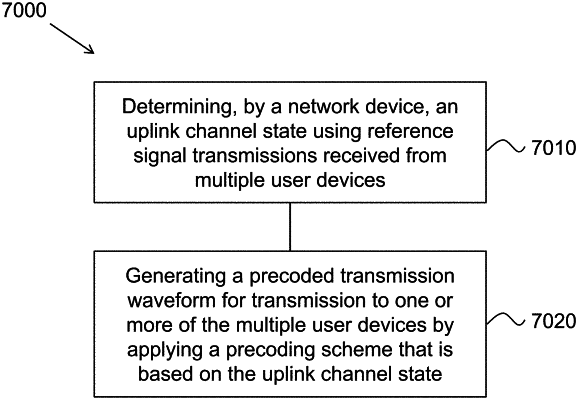| CPC H04B 7/0456 (2013.01) [H04B 7/024 (2013.01); H04B 7/0452 (2013.01); H04W 52/143 (2013.01)] | 20 Claims |

|
1. A wireless communication method, comprising:
determining, by a network device, an uplink channel state using reference signal transmissions received from multiple user devices; and
generating a precoded transmission waveform for transmission to one or more of the multiple user devices by applying a precoding scheme that is based on the uplink channel state,
wherein the uplink channel state completely defines the precoding scheme, and
wherein the precoding scheme is determined by:
estimating a channel response for each user device based on a corresponding uplink reference signal transmission received from each user device,
computing, for each user device, a covariance matrix based on the channel response,
selecting, for each user device, a vector that maximizes a selected criterion for each user device at the network device,
computing vector spaces for the multiple user devices using eigenvectors of the uplink signal to interference and noise ratio matrices,
determining, from the selected vectors of and the vector spaces for the multiple user devices, a downlink power allocation for each user device, and
using the selected vectors and the downlink power allocations for determining the precoding scheme.
|